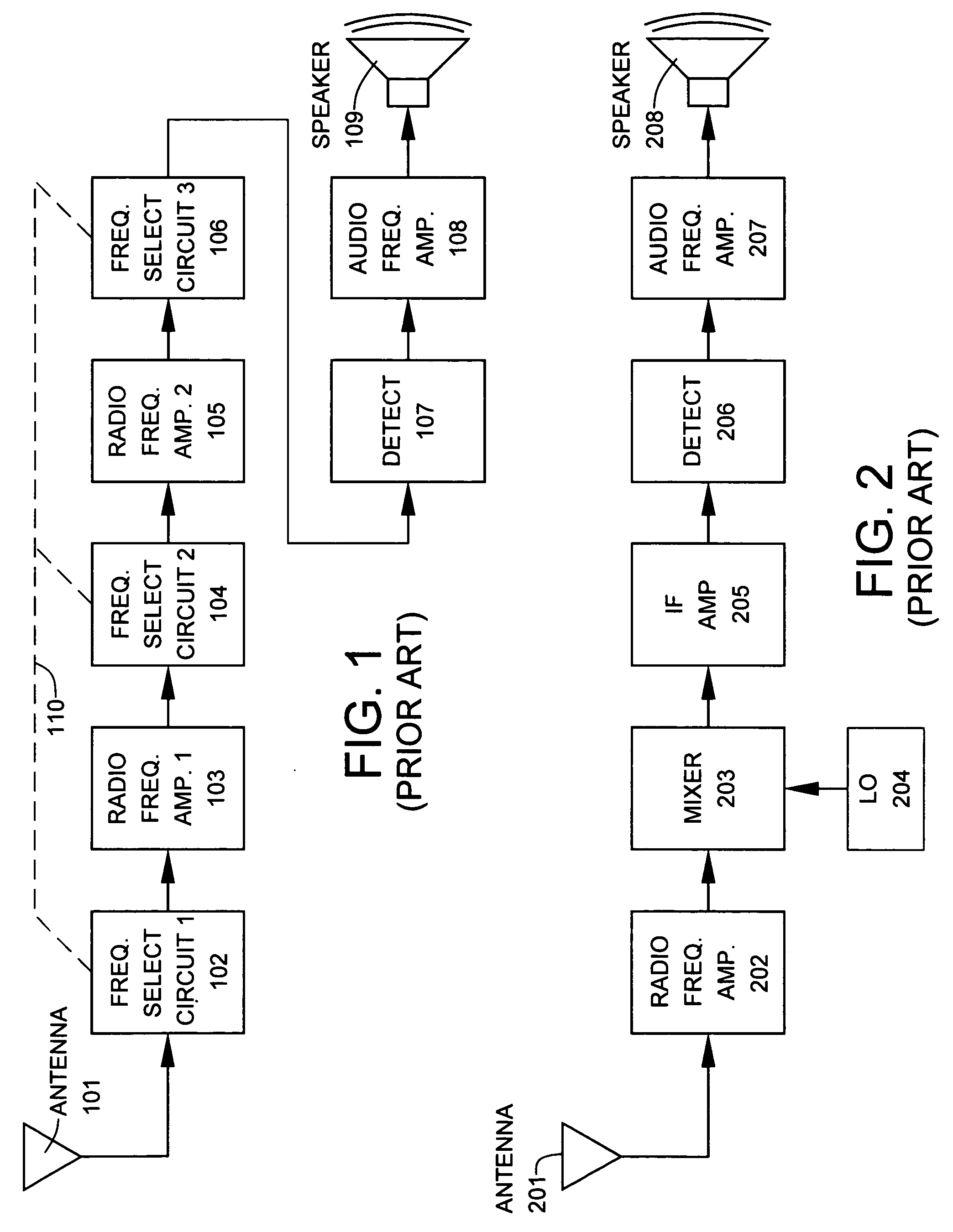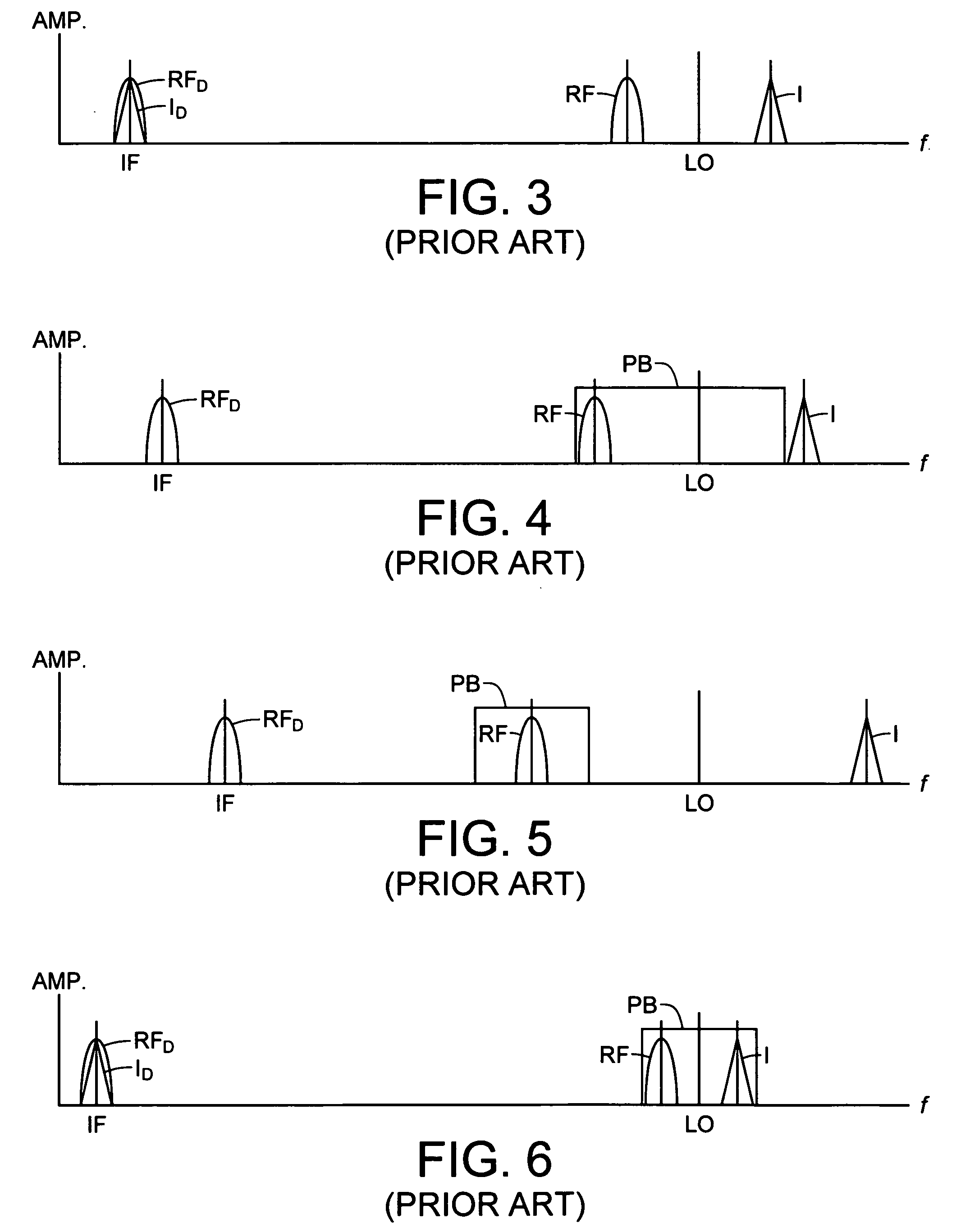Superheterodyne receiver having at least one downconversion stage empolying a single image reject filter stage and both low-side injection and high-side injection of a local oscillator signal
a superheterodyne radio and filter stage technology, applied in the field of multichannel superheterodyne radio receivers, can solve the problems of unrealistic brickwall passband shape and may not even be symmetrical curves, so as to improve channel selectivity and image rejection, optimize filter bandwidth, and simplify the design of the receiver's channel selection stage
- Summary
- Abstract
- Description
- Claims
- Application Information
AI Technical Summary
Benefits of technology
Problems solved by technology
Method used
Image
Examples
Embodiment Construction
[0031] The present invention provides for a simple and inexpensive multi-channel superheterodyne receiver architecture that improves both channel selectivity and image rejection. This is accomplished by using a relatively low intermediate frequency (IF) and a novel approach to local oscillator (LO) frequency selection which causes image frequencies to fall outside the passband of a single, low-Q image reject filter. Any channel that falls within the passband of the image reject filter can be downconverted with image rejection if the bandwidth (BW) of the image reject filter is less than 4 times the IF. If the frequency of the desired channel falls within the lower half of the passband of the image reject filter, then low-side injection of the local oscillator (LO) signal into the mixer is employed. On the other hand, if the frequency of the desired channel falls within the upper half of the passband of the image reject filter, then high-side injection of the LO signal into the mixer...
PUM
 Login to View More
Login to View More Abstract
Description
Claims
Application Information
 Login to View More
Login to View More - R&D
- Intellectual Property
- Life Sciences
- Materials
- Tech Scout
- Unparalleled Data Quality
- Higher Quality Content
- 60% Fewer Hallucinations
Browse by: Latest US Patents, China's latest patents, Technical Efficacy Thesaurus, Application Domain, Technology Topic, Popular Technical Reports.
© 2025 PatSnap. All rights reserved.Legal|Privacy policy|Modern Slavery Act Transparency Statement|Sitemap|About US| Contact US: help@patsnap.com



